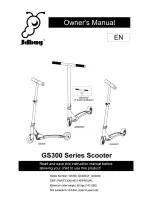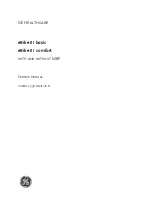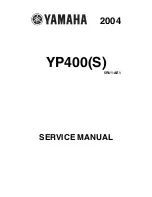
84
2.8.
Do not overload the bicycle with excessive weights. The maximum capacity of
the bicycles is 120 kg.
2.9.
Avoid prolonged exposure to the sun. When not in use, make sure the bicycle is
always kept in the shade.
NOTE:
The heat generated by solar irradiation can increase the temperature inside
the battery pack and deteriorate the electrochemical elements.
2.10.
In the event of heavy rains, do not to use the bicycle and shelter it from
the weather. Avoid prolonged exposure to fog, dew, soft rime, and any other wet
environment.
NOTE:
Although well-protected, metallic and electronic parts may show corrosion
which may compromise the functionality of the bicycle.
2.11.
The bicycle is designed to be used by one person at a time. Do not carry
anyone else other than yourself.
3.
Use of the bicycle
FOREWORD
This section refers to the controls and the instrument panel.
STARTING THE BICYCLE
The electric motor is initiated exclusively through the force applied on the pedals by
the user. It disengages and ceases to propel the vehicle when pedalling stops.
DANGER
NEVER USE THE BICYCLE IN CASE OF STORMS OR HEAVY RAIN AND NEVER
LEAVE IT EXPOSED TO THESE WEATHER CONDITIONS.
BATTERY WARNINGS
- The battery is subject to a lifecycle, which can last up to hundreds of recharges.
- Do not use battery chargers not approved by the manufacturer, as they may cause
fire, explosion, or leakage of hazardous liquids and risk of electric shock.
- Disconnect the unit when the battery is fully charged. Excessive charging can limit
its duration.
- Extreme temperatures can greatly reduce the battery’s capacity and life. The
battery’s maximum performance peak can be obtained at temperatures between
10°C and 30°C.
- Avoid using it in temperatures below freezing point.
Charging and standby times are therefore influenced by several factors, so they can
vary considerably even from what is indicated in this manual.
English















































